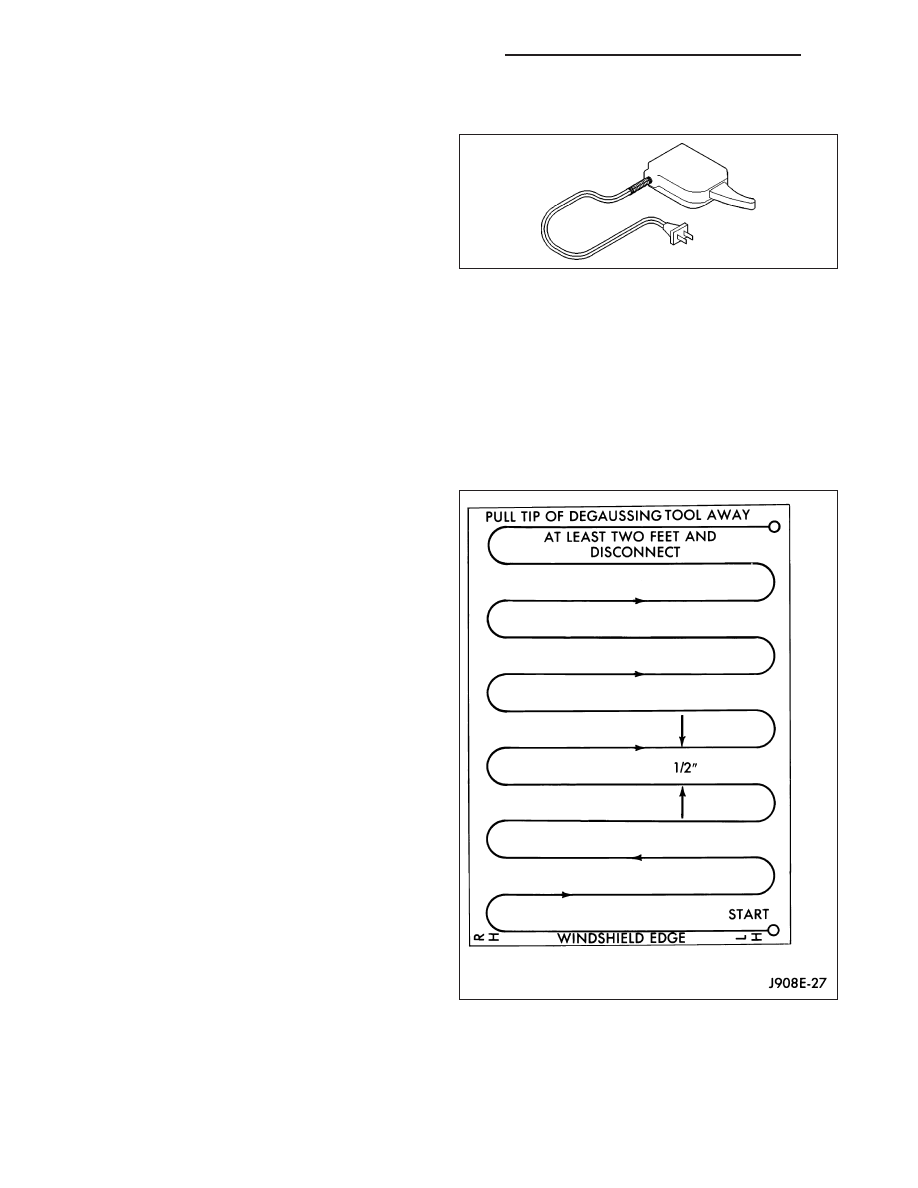Dodge Dakota (ND). Manual - part 329

COMPASS DEMAGNETIZING
A degaussing tool (Special Tool 6029) is used to
demagnetize, or degauss, the overhead console for-
ward mounting screw and the roof panel above the
overhead console. Equivalent units must be rated as
continuous duty for 110/115 volts and 60 Hz. They
must also have a field strength of over 350 gauss at 7
millimeters (0.25 inch) beyond the tip of the probe.
To demagnetize the roof panel and the overhead con-
sole forward mounting screw, proceed as follows:
1. Be certain that the ignition switch is in the Off position, before you begin the demagnetizing procedure.
2. Connect the degaussing tool to an electrical outlet, while keeping the tool at least 61 centimeters (2 feet) away
from the compass unit.
3. Slowly approach the head of the overhead console forward mounting screw with the degaussing tool connected.
4. Contact the head of the screw with the plastic coated tip of the degaussing tool for about two seconds.
5. With the degaussing tool still energized, slowly back it away from the screw. When the tip of the tool is at least
61 centimeters (2 feet) from the screw head, disconnect the tool.
6. Place a piece of paper approximately 22 by 28
centimeters (8.5 by 11 inches), oriented on the
vehicle lengthwise from front to rear, on the center
line of the roof at the windshield header. The pur-
pose of the paper is to protect the roof panel from
scratches, and to define the area to be demagne-
tized.
7. Connect the degaussing tool to an electrical outlet,
while keeping the tool at least 61 centimeters (2
feet) away from the compass unit.
8. Slowly approach the center line of the roof panel at
the windshield header, with the degaussing tool
connected.
9. Contact the roof panel with the plastic coated tip of
the degaussing tool. Be sure that the template is in
place to avoid scratching the roof panel. Using a
slow, back-and-forth sweeping motion, and allowing
13 millimeters (0.50 inch) between passes, move
the tool at least 11 centimeters (4 inches) to each
side of the roof center line, and 28 centimeters (11
inches) back from the windshield header.
10. With the degaussing tool still energized, slowly
back it away from the roof panel. When the tip of
the tool is at least 61 centimeters (2 feet) from the
roof panel, disconnect the tool.
11. Calibrate the compass, (Refer to 8 - ELECTRI-
CAL/OVERHEAD
CONSOLE/COMPASS/MINI-
TRIP COMPUTER - STANDARD PROCEDURE -
COMPASS CALIBRATION) and adjust the compass variance, (Refer to 8 - ELECTRICAL/OVERHEAD CON-
SOLE/COMPASS/MINI-TRIP
COMPUTER
-
STANDARD
PROCEDURE
-
COMPASS
VARIATION
ADJUSTMENT).
8M - 22
OVERHEAD CONSOLE - SERVICE INFORMATION
ND